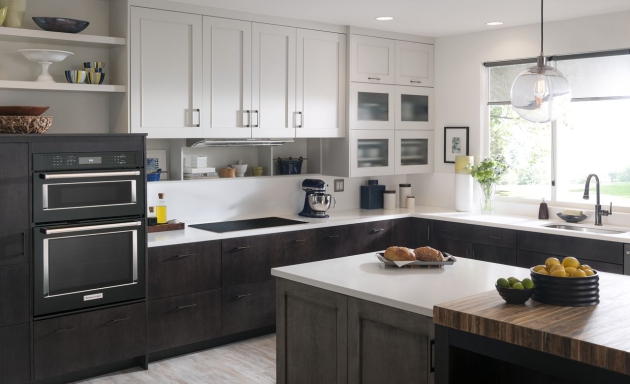Today, home appliances are a far cry from where they used to be. The convection oven is one of the most valuable kitchen inventions, undoubtedly changing how we cook. As you read this article, you will become familiar with what a convection oven is, how it operates, and its efficient methods to enhance your cooking process.
Baking is a science and an art that needs the right equipment to become a masterpiece. This three-compartmented traditional oven has been used for decades and has recently been supplemented by Convection ovens. If you are interested in a convection oven and have wondered why it is different or how it can improve your food, then you are at the right place. This blog will go over all the mechanics, the advantages or disadvantages, and the uses of a convection oven to assist you in honing your culinary skills.
What are the characteristics of a Convection Oven?
The convection oven uses a fan and a blower to distribute hot air all over the food that needs to be cooked or baked. This differs from conventional ovens, which use only direct heat from the top and bottom heating features. A circulating air system used in convection ovens distributes heat evenly, making them easier to cook and, sometimes, even quicker than conventional ovens.
How Does It Work?
In a convection oven, a fan circulates the hot air, eradicating the temperature variations that traditional ovens have and which affect cooking. Besides evenly cooking the food, it also assists in browning and crisping the food more efficiently. The exhausted system also removes moisture, giving it an added advantage in roasting and baking, knowing that they require dry heat.
Types of Convection Ovens
There are several convection ovens: countertop, wall-mounted, microwave, and convection oven hybrid. All types share the convection baking technology but may differ in added facilities, dimensions, and cost. Small appliances like countertop models are convenient for those with little kitchen space or who need an additional oven, while wall models are desired for frequent bakers and roasters needing more baking space.
To sum up, if you wish to make the best of frozen food and obtain a crispy, juicy, and tender result with never-more moist meals, pay attention to the mentioned above tips and use a convection oven when:
Convection ovens are very flexible and have many uses, as seen in the above examples.
Here are some scenarios where a convection oven truly shines
Baking
Convection ovens are perfect for baking because they circulate heated air, essential for goods like cakes. Cookies, cakes, and pastries bake well at a constant heat and thus are evenly browned and cooked to perfection. The dry heat also assists in attaining a crispier crust among breads and pies.
Roasting
Browning meats and grill-like preparation of vegetables is possible in a convection oven. The circulating air helps toast the food on many sides, and dry heat is needed to get a nice brown crust. For instance, baking a chicken or turkey will make the outside brown and crispy while the meat is tender.
Dehydrating
Convection ovens are also perfect for dehydrating fruits, vegetables, and even meats for homemade snacks such as dried fruits and jerky. The fan and exhaust remove the moisture, thus shortening the dehydration time compared to oven dehydration.
Reheating
It is not a secret that meals reheated in a convection oven are usually better than those in a microwave. The even heat distribution implies that the heated food becomes smooth while acquiring the intended heat.
How to Convection Oven
Working with a convection oven may differ slightly from a conventional oven, so it is vital to know the difference.
Adjust the Temperature
It is important to note that when baking in a convection oven, most chefs and cooks suggest lowering the temperature by approximately 25 degrees compared to a regular oven. This assists in better heat dispersion and avoids burning meals on the outer side while remaining raw on the inner side.
Monitor Cooking Time
Because foods cooked in a convection oven cook faster, monitoring them as they are being cooked is advisable. Gently begin giving a test before the recipe’s stated time for the cake to be fully baked. Eventually, you will learn the extent to which your convection oven bakes food more quickly.
Use Appropriate Cookware
The best dishes for maximizing convection effects are shallow baking pans and trays. Do not use deep, covered dishes; they will limit air circulation and nullify the convection baking process.
Avoid Overcrowding
Shelter all the items in the oven so that there is sufficient space around them so hot air can circulate. An obvious problem is overcrowding, where some parts of the food are not exposed to the circulating hot air.
Experiment with Settings
Most convection ovens have different controls for the heat required, including convection bake, roast, and convection broil. Try these settings in your preferred dishes and see which would complement your cooking style.
Conclusion
As shown above, adding a convection oven is very useful for any kitchen since it has many characteristics not found in a conventional oven. Because of its efficient heat distribution across the food, it is suitable for baking, roasting, dehydrating, and reheating, among other things. Once you know how to cook with a convection oven, your cooking and the taste of the foods you cook will improve.
Adding a convection oven in your kitchen can move you to the next level for the professional cook or the hobbyist preparing his first meal. Thus, each time you purchase a new oven, it may be helpful to contemplate the benefits of convection cooking and how it may enrich your home-cooked dishes.
Contact your local kitchen appliance specialist for further assistance.

